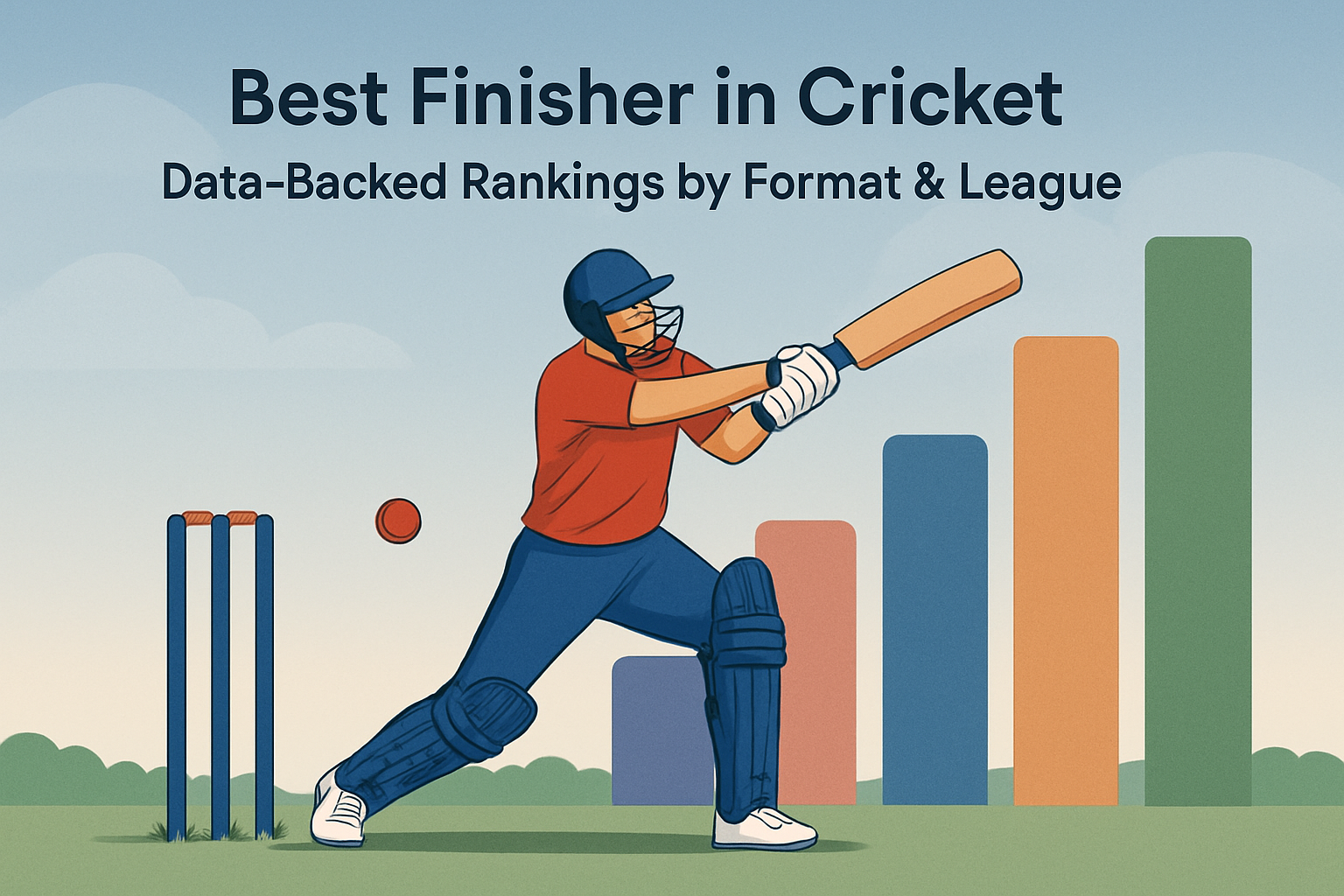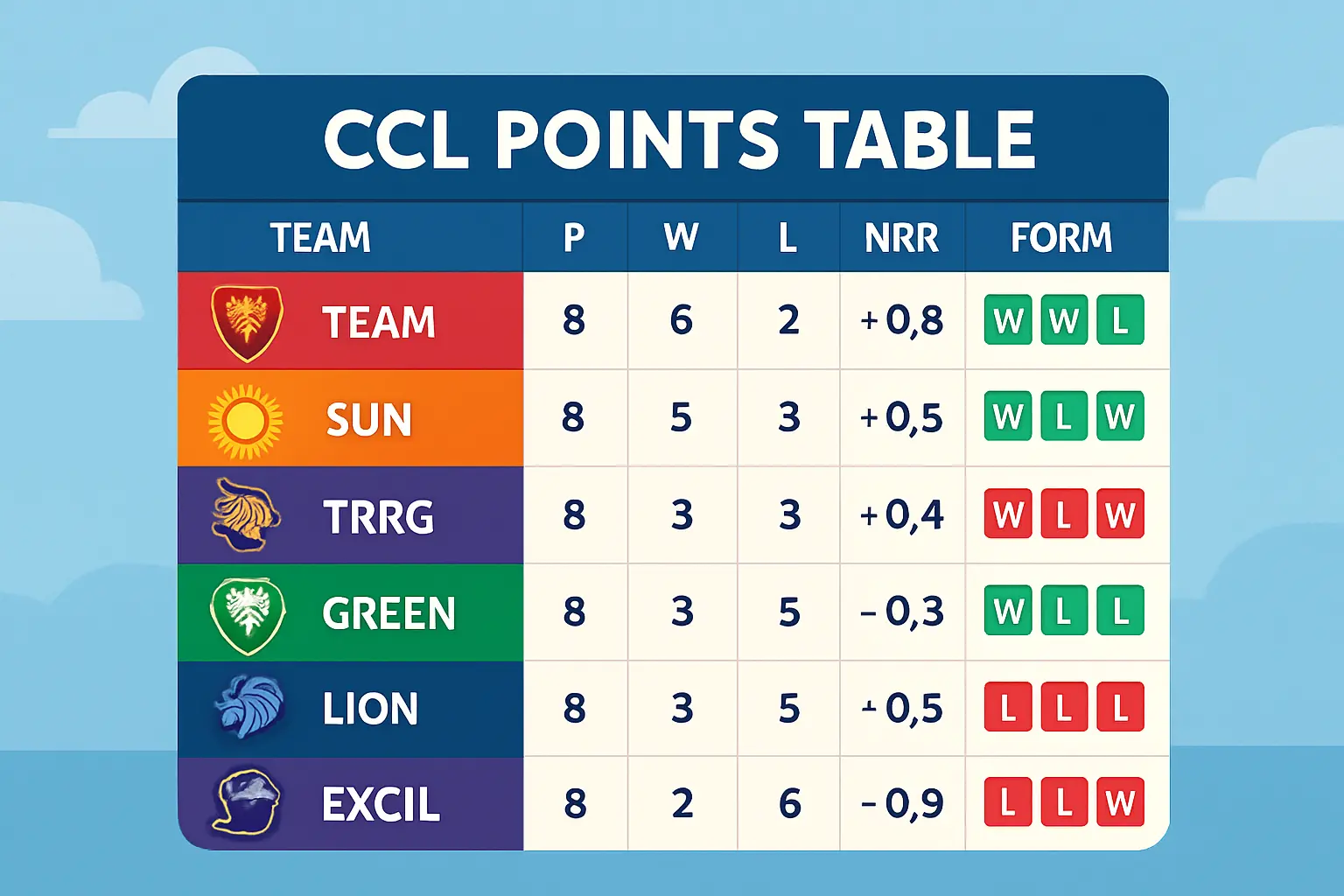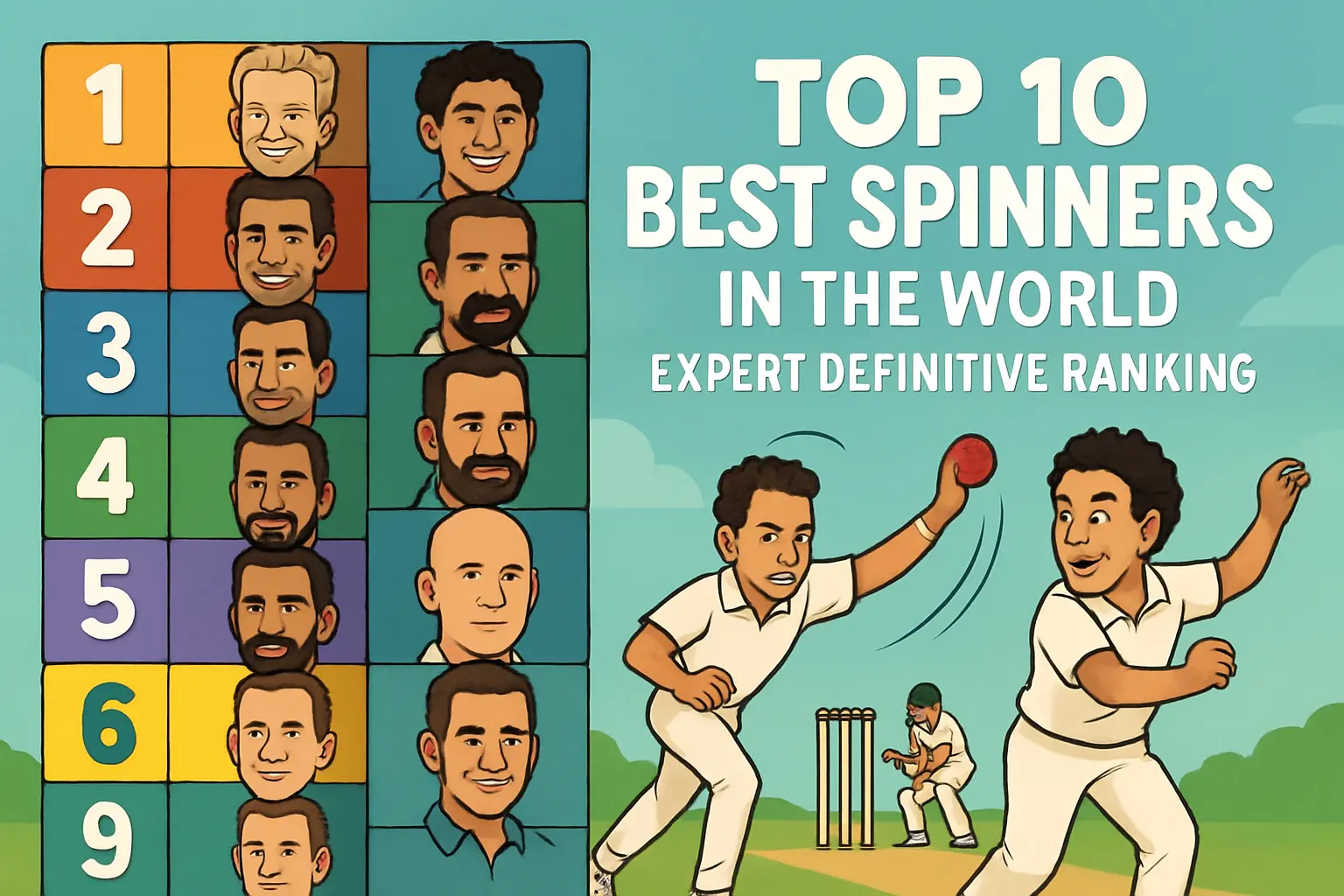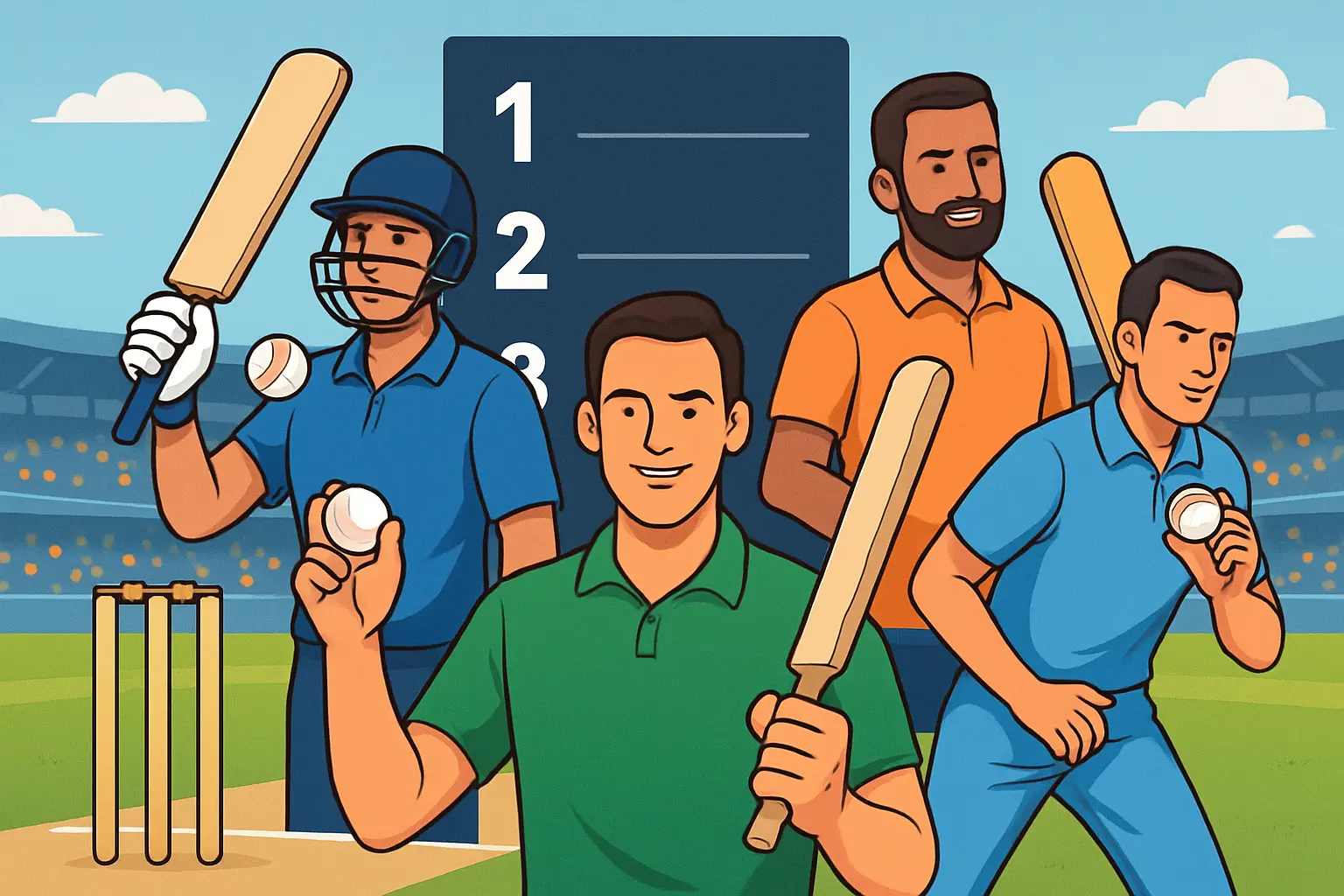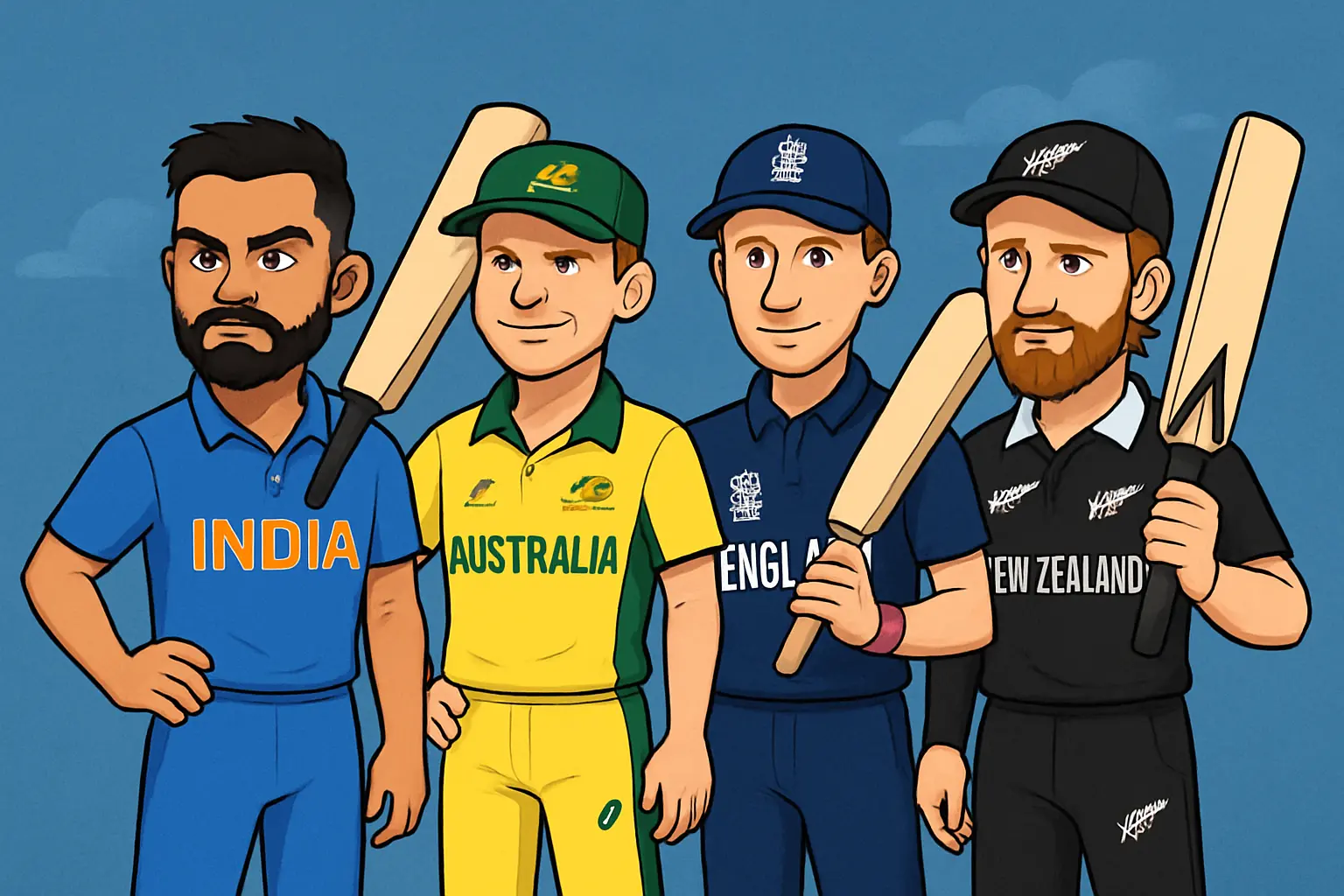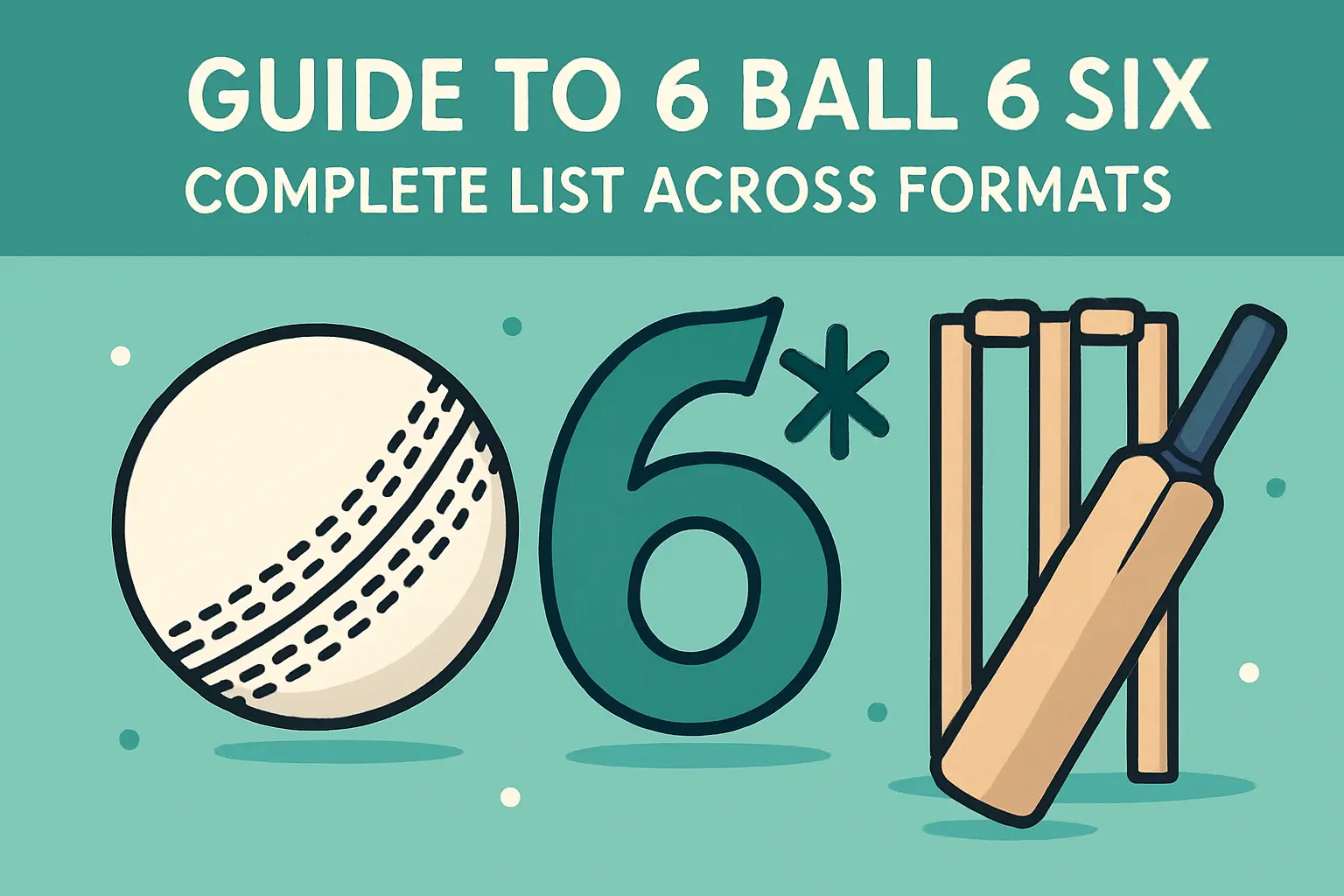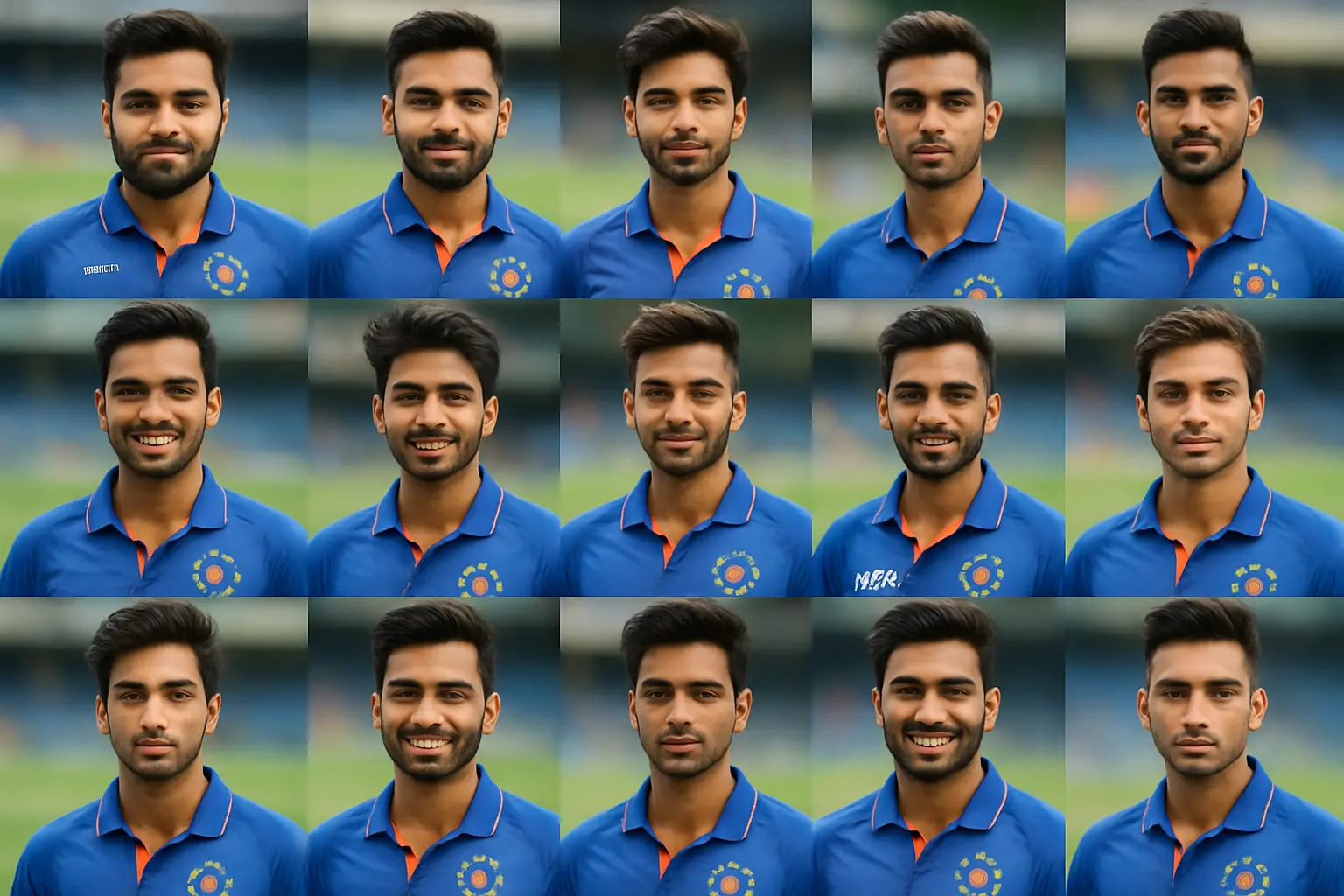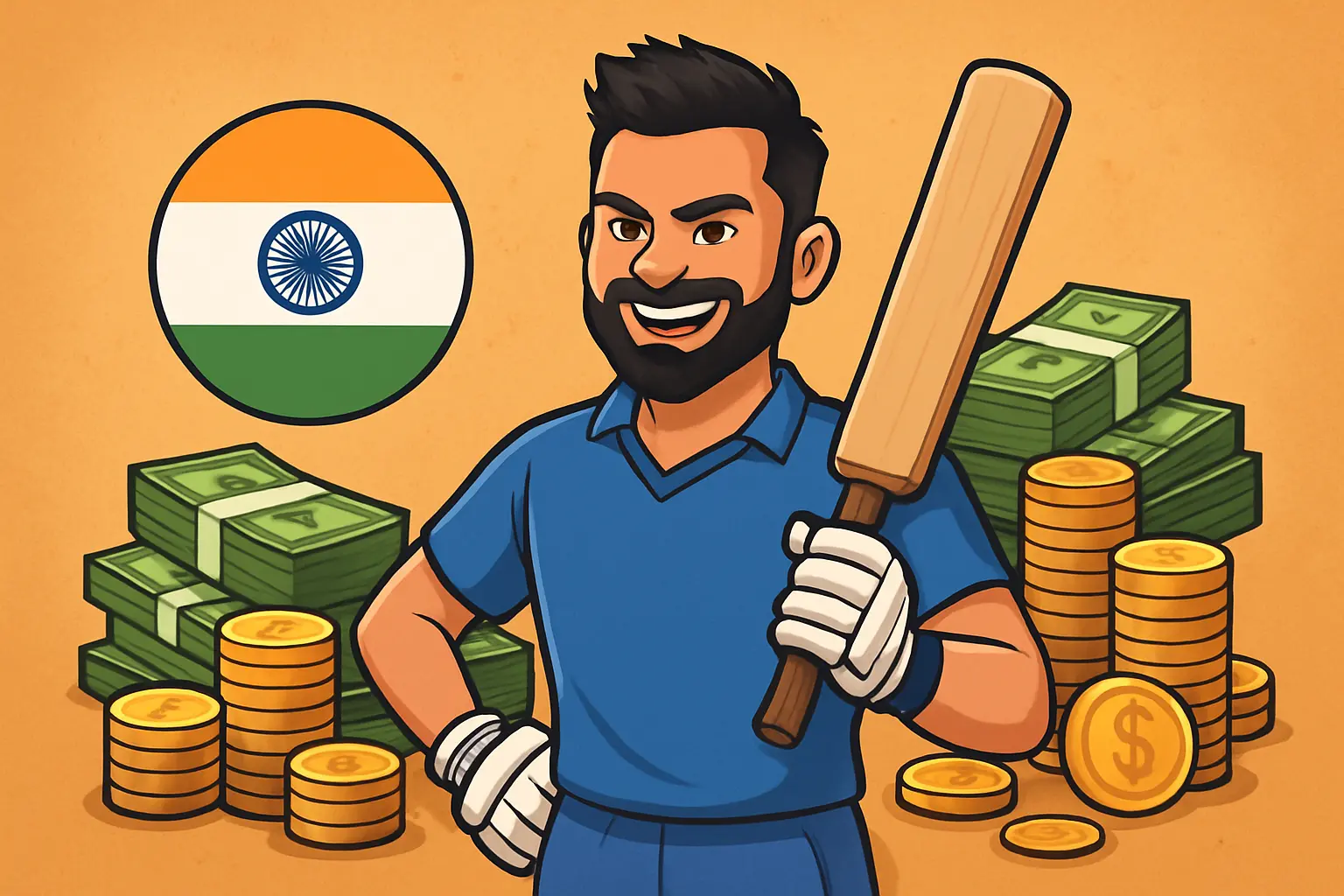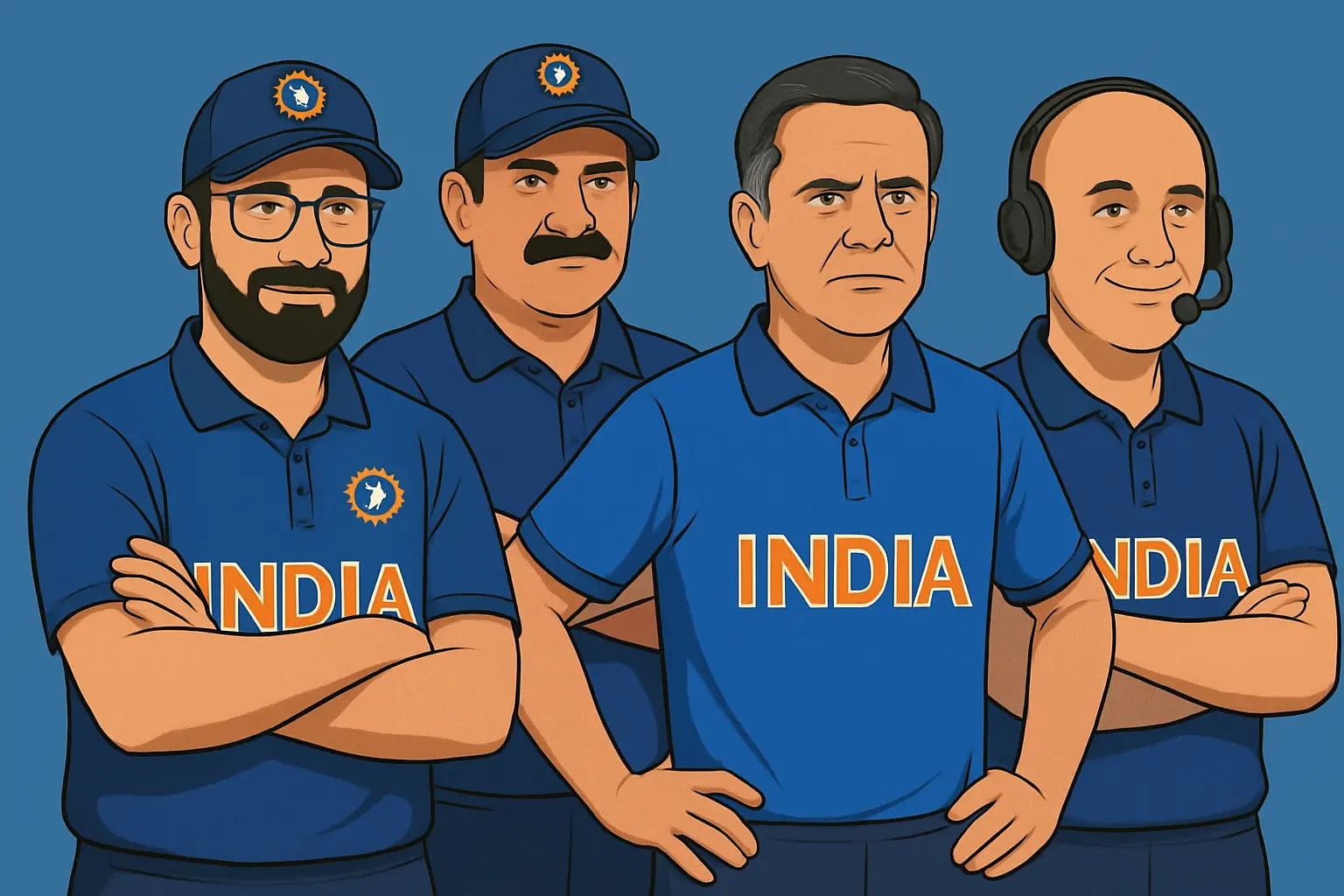I’ve spent enough evenings on the boundary ropes and in analyst rooms to know one truth about finishers: everyone has a favorite, and almost everyone is wrong for the right reasons. We remember the six that split the night sky, the last ball scooped, the ice-cold stare on the chase. What the mind forgets is the grunt work—how the best finishers in cricket manage risk by the ball, pull fielders like chess pieces, and lift win probability when the rest of us have written off the chase.
This guide goes deeper than highlight reels. It defines “finisher meaning in cricket” precisely, ranks the best finishers in cricket with a clear methodology, separates ODI from T20 and leagues like IPL, PSL, and BBL, and does something most lists don’t—gives women’s cricket the space it deserves. The result is a set of rankings and insights that blend data, game feel, and the scars that come from watching the last four overs from a dugout that smells like tension and tape.
Top Five Overall: Summary and Rationale
- MS Dhoni — Highest composite score across not-out percentage, chase average, and finishing in knockout pressure; signature clarity in chases and unmatched control of tempo.
- AB de Villiers — The widest finishing toolkit ever seen: 360° strokeplay, pace manipulation, and field-rewriting innovation; unmatched in mixed-skill scenarios needing acceleration plus placement.
- Michael Bevan — The prototype ODI finisher; elite average in successful chases and not-out frequency; surgical running and late-overs control before power-hitting became mandatory.
- Andre Russell — The most destructive T20 finisher; death-overs strike rate that warps fielding plans; absurd six-hitting range changes the math of “impossible” chases.
- Kieron Pollard — High-leverage specialist across leagues; consistent death-overs power with minimal dot-ball risk; heavy sample size in match-winning finishes.
Finisher Meaning in Cricket: Definition That Stands Up to Data
A finisher in cricket is the batter tasked with converting a volatile endgame into a result. The role spans two major contexts:
- Chasing: Closing out a target by balancing required rate, wickets, match-ups, and fielding constraints in the final phase (overs 40–50 in ODIs; 16–20 in T20s).
- Setting: Maximizing total in the death overs by shifting boundary frequency without surrendering control—turning par into above-par.
What stats define a finisher?
- Death-overs strike rate: Overs 40–50 in ODI; 16–20 in T20. This captures boundary bursts when bowlers are in their best endgame patterns.
- Average in successful chases: Among lower middle order (roughly No. 5–7) to filter top-order biases.
- Not-out percentage: True “last over, last man standing” behavior.
- Boundary percentage and balls per boundary: Measures the rate of pressure release.
- Dot-ball percentage in death overs: Under-discussed but vital—minimizing dots preserves runway.
- Finishing success rate with 30+ needed in the last 3–5 overs: A proxy for miracle territory.
- Win probability added (WPA) or impact index: Quantifies how much a batter shifts match state from near-loss to win, ball by ball.
- Sample size thresholds: Enough innings in finishing phases; events over narrative.
Methodology for Rankings
- Formats: Separate results for ODI, T20I, and leagues (IPL, PSL, BBL). Tests are treated as a special case due to different tempo and incentives.
- Role filter: Focus on players who bat frequently at No. 5–7 and/or clearly assume finishing duties; include rare top-order players with consistent finishing outcomes.
- Time weighting: Balance career peaks with recent performance. League lists emphasize current form more heavily.
- Opposition and venue context: Weight finishing against high-quality bowling and in tougher environments.
- Small-sample adjustment: For newer names (e.g., Rinku Singh, Tim David), temper extraordinary strike rates with sample size caution.
What Makes a Great Finisher in Cricket
- Ball-by-ball risk calibration: Knowing when a single is worth more than a boundary attempt.
- Field pressure and manipulation: Walking across, opening up angles, forcing captains to move a sweeper and gifting a single elsewhere.
- Pace control: Ability to hit both high pace and high skill (slower balls, wide yorkers, cutters).
- Exit options: Multiple scoring options per ball—power down the ground, late dab, ramp, and off-side lift.
- Running between the wickets: Squeezing twos when boundaries dry up.
- Match-up literacy: Targeting overs from specific bowlers; waiting for the one over that flips the chase.
- Temperament: Low heart rate when the entire stadium is panicking.
The Overall Best Finishers in Cricket: All-Time Rankings
-
MS Dhoni
Why he’s No. 1
- Highest composite of chase reliability, not-out frequency, and clarity in the final five overs.
- Unique asset: finishes with singles and twos before detonating; almost never panics out of sequence.
Signature finishes
- World Cup final at Wankhede: came early, absorbed pressure, then finished with a towering six.
- Adelaide ODI chase: an enormous straight hit in the penultimate over when options seemed gone.
- Multiple IPL finishes with 16+ needed in the last over; classic template—deep bat, area hitting into midwicket and long-on.
Key strengths
- Reads angles against yorkers better than anyone; turns blockholes into base-hits.
- Dot-ball avoidance under pressure; thrives when equation looks like 45 off 20.
-
AB de Villiers
Why he’s here
- All-format genius with the broadest finishing palette, equally adept at threading gaps and clearing 90-meters.
- Changed what “possible” means with scoops and reverse-pulls at the death.
Signature finishes
- IPL at Wankhede: a chase that looked gone until he went 360° against death specialists.
- Johannesburg ODI chase vs England: laser-guided acceleration and last-over composure.
Key strengths
- Manipulates pace; punishes both full and short with equal menace.
- Turns a wide, slower ball from unhittable to a boundary with bat speed and balance.
-
Michael Bevan
Why he’s here
- The original ODI finisher archetype; made singles look like boundaries in meaning.
- Carried chases with surgical placement and stamina rather than brute power.
Signature finishes
- Multiple last-over ODI wins where he peeled off twos at will and calmly found the fence on cue.
Key strengths
- Unmatched reading of chase tempo before the T20 era taught everyone else.
- High not-out percentage; coaxed deep chases into manageable equations.
-
Andre Russell
Why he’s here
- The most destructive T20 finisher; turns 12-an-over into mild inconvenience.
- Death-overs strike rate in domestic leagues sits in a stratosphere few can even glimpse.
Signature finishes
- IPL knocks with 50+ in the final five overs; bowlers miss by inches, the ball travels rows deep.
- Caribbean league chases where the result flips in two overs.
Key strengths
- Enormous bat speed and base power; picks length early and favors straight and midwicket arcs.
- Can hit the yorker; few hitters do that consistently.
-
Kieron Pollard
Why he’s here
- Massive sample of clutch finishes across IPL, PSL, CPL, and internationals.
- Calm tempo, fewer dots, uses height and reach to maul wide yorkers.
Signature finishes
- IPL chase with a towering 80+ that reduced a parabolic required rate to dust.
- PSL clean-ups where he closed late overs with surgical power.
Key strengths
- High percentage big-hitting without too many false swings; decisive matchup targeting.
- Jos Buttler
- ODI/T20 finisher-keeper with unflappable control; scoop to straight hit menu.
- Particularly adept at chasing pace; excellent at going early when the game demands.
- David Miller
- “Killer Miller” has matured into a consistent, low-risk finisher; square and long-on arcs are money.
- Brilliant in IPL and for South Africa as the last-word hitter or partner.
- Dinesh Karthik
- T20 specialist who mastered the lap and late-cut to rotate strike off yorkers; Nidahas decider cameo is a masterclass forever.
- High finishing IQ; knows where the fielders aren’t and strokes there.
- Lance Klusener
- The left-hander who brought fear to end overs in ODIs before death batting went mainstream.
- Full-face bludgeon; brutal through the line; cluster of last-over wins.
- Ben Stokes
- Not a classic finisher by role, but a high-pressure closer in defining chases—ODI final at Lord’s and world event T20 final underlined it.
- Grit over pure boundary pop; thrives in chaotic last acts.
Best Finishers Right Now: Across Formats and Leagues
- Andre Russell: Still the scariest endgame hitter in T20 leagues; can win with five overs of chaos.
- David Miller: Reliability plus power; strong vs pace and legspin; clean against wide yorkers.
- Glenn Maxwell: Not pure finisher in role, but absurd end-overs acceleration; switches field like a magician.
- Tim David: IPL and international T20 death-overs machine; ferocious vs length; late power specialist.
- Rinku Singh: Death-overs strike rate explosion in IPL; the five-sixes finish became folklore for a reason.
- Hardik Pandya: Calm endgame organizer; adds running tempo and line-breaking power when needed.
- Jos Buttler: When he’s held back, chases look easy; sees gaps even in set fields.
- Dinesh Karthik: Reinvented as a T20 finisher; game awareness and late-overs shot map set him apart.
- Heinrich Klaasen: Middle-to-late monster; not exactly a No. 6, but big finishes in death overs.
- Nicholas Pooran: Flexes between anchor and finisher; superb at switching into six-mode late.
Best Finishers in ODI Cricket (All Time)
- MS Dhoni — The ODI finisher prototype in modern cricket: control, calm, and chases sculpted like sculptures.
- Michael Bevan — The minimalist master: singles, smart twos, and last over fences when needed.
- AB de Villiers — Finisher plus accelerator; ODI strike rate spike at the death unmatched for a top batter.
- Lance Klusener — Death overs bully before variations were fashionable; out-hit plans with raw power.
- Jos Buttler — Lofted power with minimal risk; late-game engine for England’s white-ball transformation.
- Michael Hussey — Mr. Cricket finished with composure; right-hand answer to Bevan’s template with more boundary gears.
- Ben Stokes — Closes games of national magnitude; uses angles and can run teams to death.
- David Miller — Best ODI finishes often arrive in chases when chasing pace bowlers; deep batting value.
- Ravindra Jadeja — Quietly tremendous in ODI closures for India; accelerates off spin and steals twos.
- Javed Miandad — More a clutch presence than a modern finisher, but that last-ball six defined endgame nerve.
Best Finishers in T20I Cricket Right Now
- Jos Buttler — Rare T20I finisher-opener; when he’s held down the order, he closes without fuss.
- Glenn Maxwell — Insane late acceleration; punishes miss-hit margins; shotmaker unbound.
- David Miller — High percentage boundary hitter; reads slow balls, belts full ones.
- Hardik Pandya — Middle-order control; clears midwicket and long-off consistently; strike-rotate-surge template.
- Tim David — Minimal backlift maximal exit velocity; specializes in closing overs 17–20.
- Rinku Singh — Calm presence; unique ability to hit from ball one in the death.
- Rovman Powell — Brutal clubbing; doesn’t need many to end a chase.
- Asif Ali — Pakistan’s short-form endgame option; pockets of brilliance in true death scenarios.
- Dinesh Karthik — Experience, yorker-scoop library, calculating tempo in small chases.
- Liam Livingstone — Opens the shoulders, punishes slot; provides late overs 90m+ strikes.
Best Finisher in IPL History
Shortlist and rationale
- MS Dhoni — Longevity, terrifying calm, not-out master. Left countless bowlers searching for wider and fuller without escape.
- AB de Villiers — IPL’s ultimate improviser; some of the greatest chases ever at Chinnaswamy and Wankhede.
- Kieron Pollard — If there is a definition of “don’t bowl there,” Pollard wrote it; match-winner in sprees.
- Andre Russell — Bowling plans disintegrate; yorker marginal misses go 15 rows back.
- Dinesh Karthik — Reinvented as finisher; expert at harvesting gaps behind the wicket.
- David Miller — The matured version brings stability and power; now routinely closes tight ones.
- Hardik Pandya — Calm pattern recognition; strong over long-on/long-off corridors; leader’s clarity.
- Rinku Singh — Shorter sample; high impact; the five-sixes finish was not a fluke, but the unveiling of a method.
- Ravindra Jadeja — Game IQ, left-hand angle, six-hitting off spin, razor running.
- Suryakumar Yadav — Not primarily a finisher role, but late-over inventiveness flips run rates.
Best IPL Finishers Right Now
- Tim David — Death overs bulldozer; punishes in the slot and hits even waffle-yorkers into stands.
- Rinku Singh — Confidence and execution beyond his years; late-game matchups don’t faze him.
- David Miller — Turns chaos into quiet; carves wide lines, rifles full ones.
- Andre Russell — Any equation under 15 per over is realistic; even 18 isn’t safe.
- Ravindra Jadeja — Compresses risk, maintains twos, strikes decisively at targeted bowlers.
Best Finishers in PSL
- Asif Ali — A true PSL cult finisher; destroys slot balls and targets midwicket pockets.
- Kieron Pollard — When on PSL duty, brings the same late-overs clarity and weight of shot.
- Tim David — A rare overseas player who has treated PSL death overs as his personal playground.
- David Wiese — Often undervalued; multiple PSL chases finished with level head and long-ball power.
- Azam Khan — Emerging force; uses bottom hand power and range to annihilate straight lines.
Best Finishers in BBL
- Glenn Maxwell — One-man X-factor; plays cat-and-mouse with fielders at the death.
- Ashton Turner — Perennially underrated Scorchers closer; remarkable at rotating to set up boundary balls.
- Tim David — Did his finishing apprenticeship in the BBL; launched into superstardom from Hobart finishes.
- Daniel Sams — Bowler-allrounder who can hit a long ball and operate in chaos.
- Marcus Stoinis — Usually opens, but when closing, the ball travels; belt into midwicket territory.
Best Women’s Cricket Finishers
The absence of this section in most lists is a blind spot. Finishing in women’s cricket demands precise pace control, smart running, and the ability to exploit angles on larger boundary sets.
- Harmanpreet Kaur — The emotional center of India’s white-ball endgames; thrives in pressure chases; crisp on off-side lofts, lethal vs spin late.
- Nat Sciver-Brunt — The most complete endgame batting toolkit in the women’s game; timing, placement, and boundary acceleration without frantic swing.
- Ash Gardner — Right-hand power with a cunning eye for slower balls; thrives in WPL and internationals under lights.
- Grace Harris — Thunderous base power; unclutters chases with brutal straight hitting; fearless against pace.
- Marizanne Kapp — Ice in the veins; gears up late and doesn’t miss slot balls; classy under pressure in WPL and internationals.
- Deandra Dottin — Longtime six-hitter; explosive down the ground and across midwicket; matches swing with balance.
- Chamari Athapaththu — More often a top-order force, yet her late accelerations have turned games; punishes pace late.
- Richa Ghosh — Emerging India finisher; superb at finding the fence behind square and straight; off-pace hitter.
Finisher vs Anchor: Roles Explained
- Anchor: Builds the innings’ backbone; sets tempo from the top or middle. Values wicket preservation and stability across overs 7–15 in T20, 11–35 in ODIs. The best anchors finish sometimes but are not obligated to chase down 14-an-over scenarios.
- Finisher: Prioritizes endgame impact over accumulation. Values strike rotation under pressure, death-overs strike rate, and carefully timed big hits. Lower not-out percentage for a finisher isn’t always bad if it reflects taking on the only winning option; context matters.
In modern white-ball cricket, hybrid roles are common. A player like Jos Buttler can anchor and then finish. Glenn Maxwell can be a chaos engine in the middle and still close if the chase drags. The lines aren’t rigid; the best teams choreograph handovers between roles.
Death-Overs Strike Rate Leaders: Patterns Worth Knowing
- Hyperpower hitters (Russell, Pollard, Tim David, Livingstone) feast on length and miss-yorkers in overs 17–20, often maintaining a six-per-8-balls cadence when on song.
- Match-up exploitation is crucial. Right-hand power hitters prefer full and wide over leg-side stacked fields; left-handers often punish the slower ball into the opposite wind.
- Dot-ball avoidance wins as many games as six-hitting. Dhoni’s greatness included the art of turning yorkers into singles to keep the equation alive.
Not-Out Percentage and Why It Matters
For finishers in chases, not-outs frequently correlate with wins. Dhoni and Bevan treated not-outs as a tactical craft—organize the chase until the last two overs, then surge.
The metric needs context. In T20, a finisher taking on an 18-per-over ask might die trying, which doesn’t diminish impact if it was the only path to victory.
Signature Finishes: A Short Anthology
- MS Dhoni, Wankhede: Walking in early, didn’t panic. Took singles off peak bowlers, waited for one miss, then launched the immortal six.
- Dinesh Karthik, Nidahas decider: 29 off 8 with a last-ball lofted six over extra cover. Cue clarity was off the charts.
- Carlos Brathwaite, Eden Gardens: Four consecutive sixes to close a T20 World Cup final. Pure sequencing: hips, leverage, arc.
- Rinku Singh, Ahmedabad: Five sixes in the final over—pre-meditation, yes, but also preternatural calm.
- Ben Stokes, Lord’s ODI final: Equal parts nerve and control under chaos. Bled runs where fielders weren’t.
AB de Villiers vs MS Dhoni vs Michael Bevan: Who Is the Greatest Finisher?
Dhoni holds the throne for overall finishing across formats because of chase average, not-out control, and the sheer volume of games closed from dicey positions. AB de Villiers is the maestro of impossible angles and strike manipulation, arguably the best when you need both boundary invention and pace reading across bowling types. Michael Bevan remains the ODI archetype; his greatness lives in how he understood tempo before data shouted it from screens.
If you want the batter most likely to take you home with 40 needed off 24 on a two-paced pitch, pick Dhoni. If you want to defy field placements and bowlers’ best balls, pick AB. If you want a clinic in turning a messy chase into control without vanity, pick Bevan.
Russell vs Pollard vs Miller in T20 Death Overs
- Andre Russell: Devastation. Even full balls fly. Slight misses become eight-run swings. He bends required rates like rubber.
- Kieron Pollard: Outcomes with restraint. Fewer dots, cleaner swing, and deeply intelligent matchup reading. He’ll target your fourth best option and ruin him.
- David Miller: Cleaner technique now than ever; fewer wasted swings; strong against legspin into the leg-side gap.
If you need 30 off 12, Russell is the boogeyman. If you need a high-probability 18 off 12 with wickets in hand, Pollard is the metronome. If you need steady removal of 12-per-over with smart shot selection, Miller is comfort.
How Teams Script the Finish
- Backloading matchups: Keep your ace finisher for a weaker bowler’s final over. Sometimes it’s worth sacrificing a quiet over earlier to force that scenario.
- The silent partner: The non-striker finisher must match running intensity and trust the caller. Misread singles kill more chases than yorkers.
- Boundary audit: Before over 17, elite finishers tally fielders’ starting positions, wind, and boundary lengths. That one extra yard to the long side shifts the target zone.
Tactical Micro-Skills That Separate Elite Finishers
- Depth at crease: Backing away or stepping in late to alter the yorker’s length into a hitting arc.
- Eye line deception: Showing leg-side intent to draw a wide line, then carving behind point.
- Wrist-late hitting: Especially in SCOOP or late dab; critical to beat short third and fine leg.
- Two-ball memory: Remember what the bowler can’t yet repeat under pressure; if he missed a length once, odds say he’ll miss again with a game on the line.
Player Capsules: Strengths, Signatures, and Snapshot Notes
-
MS Dhoni
- Strengths: Yorkered singles, twos under lights, tempo symphony.
- Signature finishes: World Cup final at Wankhede; Adelaide vs Australia; repeated IPL last-over heists.
- Notes: Taught a generation that 15 off the last over is a solvable puzzle with deep batting and placement.
-
AB de Villiers
- Strengths: Field geometry; hits good balls into unexpected zones; short backlift lightning.
- Signature finishes: IPL classics in Mumbai and Bangalore; ODI chases that felt scripted for a movie.
- Notes: The only batter who made captains redesign deep third and fine leg simultaneously.
-
Michael Bevan
- Strengths: Running, timing, high not-out percentage; risk deferred till it mattered.
- Signature finishes: Calm last-over fours, surgical singles in the penultimate over.
- Notes: The finishing role blueprint before T20 taught boundary options to everybody.
-
Andre Russell
- Strengths: Bludgeon of length, load transfer into the ball, misses punished unconscionably.
- Signature finishes: IPL storms, Caribbean fireworks in overs 18–20.
- Notes: The reason death bowlers now train for 10-inch margin perfection.
-
Kieron Pollard
- Strengths: Control of arc, brutal base power; low dot-ball in death overs.
- Signature finishes: IPL chase-killer; PSL late-over suppression; countless CPL endgames.
- Notes: The cool head who knows exactly which delivery you fear bowling under pressure.
-
David Miller
- Strengths: Solid base, perfect swing plane for full balls; picks spin for leg-side launch.
- Signature finishes: IPL closures for Royals and Titans; SA chases with zero panic.
- Notes: Transitioned from highlight finisher to reliable closer.
-
Dinesh Karthik
- Strengths: Late cuts and ramps off yorkers; calm brain; trust in matchups.
- Signature finishes: Nidahas decider; multiple IPL endgames with surgical shot selection.
- Notes: Proof that finishing is as much geometry as it is brutality.
-
Hardik Pandya
- Strengths: Organizes chases, rotates strike, has the big-ball release against length.
- Signature finishes: Asia Cup deciders; IPL chases from No. 5/6 with composure.
- Notes: Leadership lens helps him frame the chase in overs-to-go language, not ball-to-ball panic.
-
Rinku Singh
- Strengths: Fearless against pace; picks length; calm last-over nerve.
- Signature finishes: Five sixes in a last over that redefined IPL endgame lore.
- Notes: Early in career arc, but the instincts look generational.
-
Tim David
- Strengths: T20 specialist; ballistic bat speed; mid-off and midwicket lasers.
- Signature finishes: PSL, BBL, IPL—everywhere he’s been, the death overs bend to his swing.
- Notes: A modern death-overs prototype built for wide yorkers and heavy pace.
-
Jos Buttler
- Strengths: Scoop-to-straight continuum; high strike rate without frantic dots.
- Signature finishes: White-ball finals, bilateral chases; nearly unbothered by field settings.
- Notes: Sometimes opens and still ends up finishing through sheer tempo control.
-
Glenn Maxwell
- Strengths: Trick book; hits areas no field accounts for; late acceleration surgical.
- Signature finishes: Chases from nowhere in international events and BBL; the weird ball is never wasted.
- Notes: Chaos with a plan; a nightmare for captains with one over left from a fifth bowler.
-
Ravindra Jadeja
- Strengths: Low-risk rotation, sneaky power vs spin, complete running game.
- Signature finishes: IPL last-over twos that break fielders; ODI quiet closures.
- Notes: Not always flashy, but one of the best at completing the last 20 percent of a chase.
Women’s Finishing Capsules
-
Harmanpreet Kaur
- Strengths: Calm tempo-building; off-side loft; punishes anything straight at the death.
- Signature finishes: WPL chases where she calmly piloted from par to victory.
- Notes: Emotional leader; reads field more than bowling hand.
-
Nat Sciver-Brunt
- Strengths: Heaviest toolbox; power when needed, but prefers high-percentage scoring.
- Signature finishes: Finals where she walked the line between anchor and finisher.
- Notes: The most bankable endgame batter in women’s cricket today.
-
Ash Gardner
- Strengths: Short-ball ready; uses depth of crease; crushes slower balls.
- Signature finishes: Big Bash and WPL finishes punching into long-on and midwicket.
- Notes: Motor that never looks rushed; spreads field, then belts gaps.
-
Grace Harris
- Strengths: No fear; long-on threat; accepts risk when the game demands it.
- Signature finishes: WPL knockouts where the chase collapsed into her arc.
- Notes: Belief like a heat lamp; bowlers feel it.
-
Marizanne Kapp
- Strengths: Calm head, precise swing plane, slam down the ground.
- Signature finishes: Last-over chases in franchise leagues; measured, no drama.
- Notes: Finisher’s mind in an all-rounder’s body.
-
Deandra Dottin
- Strengths: Vintage hammer; punishes slot and short with relish.
- Signature finishes: International games where last four overs were hers to script.
- Notes: A finisher from another era, but the power translates across.
-
Chamari Athapaththu
- Strengths: Timing and aggression; collapses required rates when the chase drifts.
- Signature finishes: Late over bursts in internationals; captain’s clarity.
- Notes: More top-order, but finishes like a true closer when needed.
What to Track When You Judge Finishers Yourself
- Overs left vs wickets in hand: A 10-per-over ask with four wickets is harder than it sounds.
- Bowler inventory: Who has overs left? If the best death bowler is done, the equation is inflated.
- Wind and boundary sizes: Long-side targeting is smart cricket; the best hitters exploit wind like a resource.
- Fielding fatigue: Late overs expose tired arms; smart finishers run twos into those arms.
Who Stands Tall in Specific Scenarios
- When 30–40 needed off 3 overs: Russell, Pollard, Miller, Tim David, Rinku, Buttler.
- When surfaces are two-paced: Dhoni, Bevan, Miller, Stokes, Jadeja.
- Against high pace: Russell, Pollard, Maxwell, Sciver-Brunt, Gardner.
- Against wide yorkers: Pollard (reach), Tim David (leverage), Karthik (angles), Dhoni (late hands).
Best Finishers by Country (Select Highlights)
- India: MS Dhoni, Hardik Pandya, Ravindra Jadeja, Dinesh Karthik, Rinku Singh, Suryakumar Yadav (hybrid).
- Australia: Glenn Maxwell, Tim David, Michael Bevan, Michael Hussey, Ash Gardner, Grace Harris.
- England: Jos Buttler, Ben Stokes, Nat Sciver-Brunt, Liam Livingstone.
- South Africa: David Miller, Heinrich Klaasen, Marizanne Kapp.
- West Indies: Andre Russell, Kieron Pollard, Nicholas Pooran, Rovman Powell, Deandra Dottin.
- Pakistan: Asif Ali, Shahid Afridi (historic, streaky but impactful), Azam Khan.
- Sri Lanka: Chamari Athapaththu, Thisara Perera (historic T20 finishing bursts).
Chasing vs Setting: Does It Change the Ranking?
Chasing: Demands more not-out value, batting smarts, and dot-ball suppression. Dhoni, Bevan rise here; among current T20 finishers, Miller and Jadeja too.
Setting: Leans toward manic acceleration; Russell, Pollard, Tim David thrive in the last 15 balls when every run is additive, not terminal.
Common Misconceptions About Finishers
- “He scored 30 off 12, so he’s the best.” Look at match state. A free swing at the end of a dominant innings isn’t finishing; it’s padding.
- “High strike rate equals elite finisher.” Only when coupled with low dot percentage and success in tough chases.
- “Top-order batters don’t finish.” The best can do both when the team needs a role switch.
FAQ: Concise, Straight Answers
- Who is considered the best finisher in cricket history?
MS Dhoni. The composite of chase average, not-outs, and ice-cold execution in high-stakes games puts him ahead. - What is a finisher in cricket and what stats define one?
A batter responsible for closing innings or chases in the death overs. Core stats: death-overs strike rate, average in successful chases, not-out percentage, boundary rate, dot-ball percentage, and win probability added. - Who is the best finisher in T20 cricket right now?
Andre Russell for raw devastation; David Miller and Tim David for high-probability closures; Glenn Maxwell and Jos Buttler for hybrid finishing with inventiveness. - Is MS Dhoni the best finisher of all time?
Yes, as an overall across formats. AB de Villiers and Michael Bevan complete the top tier depending on format emphasis. - Who is the best finisher in IPL history?
MS Dhoni for longevity and sheer volume of clinched chases; AB de Villiers and Kieron Pollard close behind for impact. - Who is the best finisher in women’s cricket?
Nat Sciver-Brunt for consistency and control; Harmanpreet Kaur and Ash Gardner are elite closers with different styles. - What’s the difference between a finisher and an anchor?
Anchors build and stabilize in the middle; finishers close in the death. Modern players often blend both roles. - Which players lead death overs strike rate?
Among the known elites: Andre Russell, Kieron Pollard, Tim David, Liam Livingstone, Glenn Maxwell; in women’s cricket, Grace Harris and Ash Gardner are serious late-overs threats. - Which players have the most not-outs in successful chases?
Historical ODI finishers like MS Dhoni and Michael Bevan were standout not-out machines in successful chases; in modern T20, reliability varies by role and opportunity.
How I’d Pick a Finisher for Different Teams
- Team with weak lower order: Choose a low-dot, high-not-out finisher like Miller or Jadeja to protect tailenders.
- Team with deep hitting: Pick Russell or Pollard; embrace volatility for maximum upside.
- Team facing lots of legspin late: Go left-hand power (Miller) or right-handers with sweep/ramp cover (Maxwell, Karthik).
- Team playing on large grounds: Prioritize runners and gap-pickers—Sciver-Brunt, Bevan archetypes.
Why Women’s Finishing Will Dominate the Next Cycle
- Tactical sharpness is rising fast: smarter field manipulation, better fitness for twos, and improved range hitting.
- WPL impact: Concentrated high-quality matches sharpen finishing skills under spotlight; tactical osmosis from men’s leagues is visible.
The Art of the Last Over: A Finisher’s Checklist
- Ball one: Take information. Where’s the seam landing? What’s the keeper’s glove height? Wind?
- Ball two: Get the single if the field is heavy on protection; trust you’ll find a boundary ball soon.
- Ball three: Preempt the slower wide; open stance, be ready to slice.
- Ball four: If the bowler blinked earlier, expect overcompensation—sit full, hit straight.
- Ball five: With equation alive, choose risk only if the bowler still owns the matchup; otherwise drag it to the last ball in your zone.
- Ball six: Never die wondering. But swing with plan, not hope.
Verdict: The Best Finisher in World Cricket
Across formats and eras, MS Dhoni remains the best finisher in cricket. He solved chases the way a grandmaster solves endgames—seeing three overs ahead, never fighting the wrong battle, and delivering the final blow exactly when the game blinked. If the question narrows to T20 destruction, Andre Russell becomes the single most terrifying closer. For ODI craft, Michael Bevan’s legacy is foundational. For sheer invention, AB de Villiers changed finishing forever.
The beauty of the finisher’s art is its variety. Dhoni’s stillness, AB’s theater, Bevan’s patience, Russell’s ferocity, Pollard’s calculation, Miller’s assurance, Karthik’s geometry, Sciver-Brunt’s control, Harmanpreet’s poise—each solves the same equation in different languages. That’s why the role captivates us. The last overs aren’t only about muscle; they’re about mind, time, and nerve. And the best finishers in cricket make the hardest minutes of the sport look like the simplest ones in the world.

